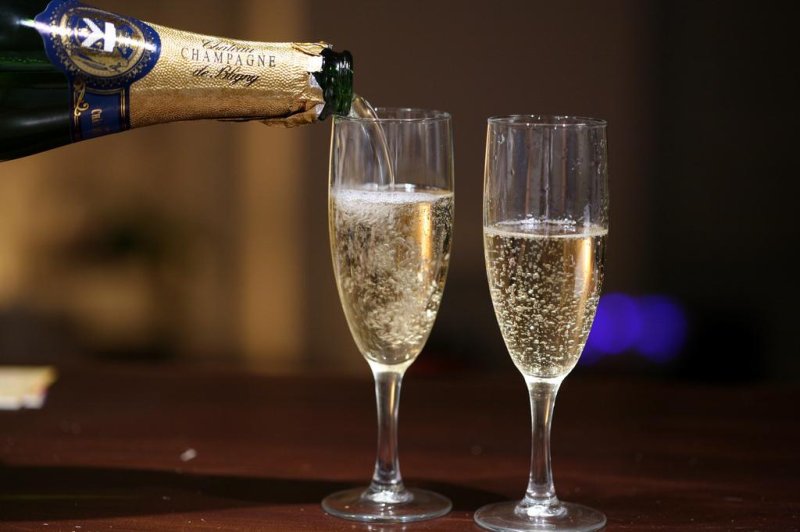Researchers measured the sounds of champagne bubbles. Photo by Simon Law/Château de Bligny/
Flickr
Dec. 5 (UPI) -- Don't taste, listen -- the sound of rising bubbles may reveal the quality of a champagne.
When people think of what champagne sounds like, they're likely to hear the pop of a cork exploding from a celebratory bottle of bubbly. But researchers at the University of Texas set out to measure the sound of champagne bubbles, with hopes of quantifying the sound of expensive sparkling wine.
"The point of the project is to study the sounds that champagne bubbles make, and to see what we can infer about the bubbles from the sounds that they make," researcher Kyle S. Spratt said in a news release. "Bubbles are very resonant. They basically ring like bells, and the frequency of that ringing depends in part on the size of the bubbles."
Some believe the size of champagne bubbles is related to quality, with expensive bottles yielding many small bubbles and cheaper versions producing fewer, bigger bubbles.
Spratt and his colleagues wanted to determine whether bubble size and distribution could be measured using acoustic instruments.
"When we came across the idea that bubbles play an important role in the quality of a sparkling wine, our first instinct was to drop a hydrophone into a glass and see what kind of sound we can hear," said Spratt.
Researchers quickly realized recording the sound of champagne bubbles was challenging. Bubbles formed on the hydrophone, skewing the recordings. Scientists used a smaller hydrophone to limit the interference.
Spratt and his research partners also realized the glass plays a significant role in promoting bubble formation.
"A wine glass is also a resonant object, so another challenge for us was to make sure that the characteristics of the glass itself weren't biasing our measurements in some way," he said.
Previous research has shown that while higher quality champagne tends to feature an abundance of smaller bubbles, larger bubbles are in fact superior for delivering a pleasant aroma at the champagne surface.
Should wine makers agree on a benchmark for bubble size and distribution, scientists could measure the acoustics to ensure a wine meets quality standards.
"The direct application would be as a simple tool that could be used to monitor the bubble size distribution in sparkling wines," Spratt said.
Spratt and his colleagues are presenting their work this week in New Orleans at the 174th Meeting of the Acoustical Society of America.















